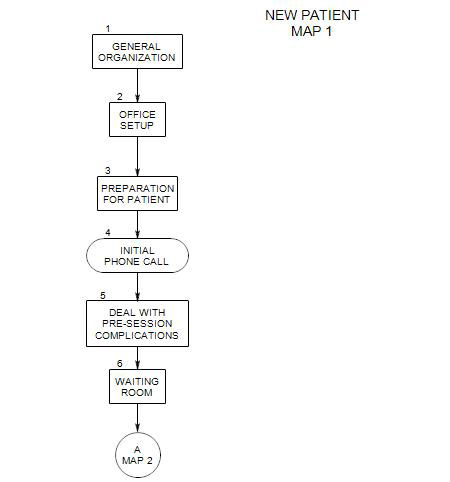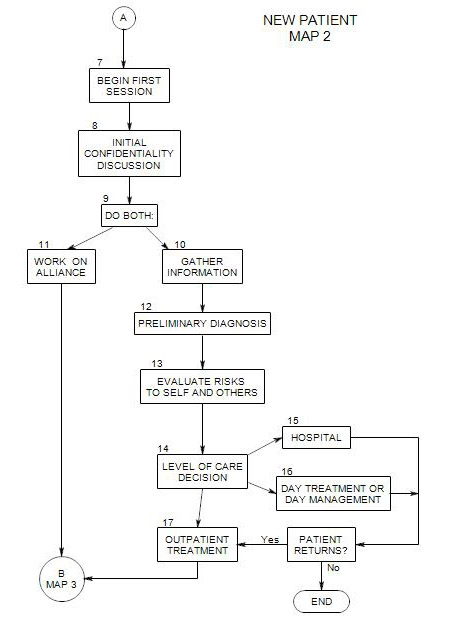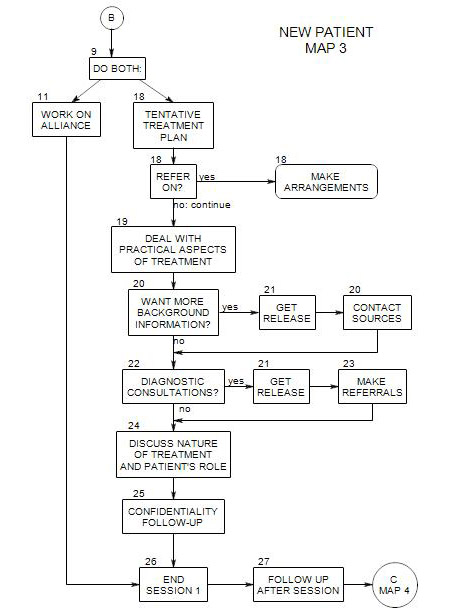-
Appears at the top of Map 4
Typically in the early part of treatment, the patient leads in deciding on what should be discussed.
You can always focus in on any issue that he/she raises, for clarification or further elaboration.
However, since defining an issue goes a long way toward resolving it, and since people come for treatment because they can’t resolve something, you should be skeptical about the accuracy and completeness of the patient’s initial presentation.
28a. Sources of More Information
At the same time, you need to refine your working diagnosis, based on a variety of clues, including the following:
Patient reports of symptoms, such as-
- anxiety, depression, trouble sleeping
- sensitivity to noise
- physical or medical symptoms
Patient reports of stresses, such as-
- work, family, neighbors,
- changes in life: changing job, moving, marriage or divorce
Patient reports on his/her own confusing behavior, such as-
- being irritable or angry
- being obsessed about someone or something
- having rituals or compulsions
- misunderstanding others
- being confused
- overusing medications, alcohol or recreational drugs
Patient’s behavior in the session, such as-
- angry, overly quiet, needing to please
- nervous
- explaining, apologizing
- excessively concerned about therapist
- obvious use of psychological defenses
Patient’s complaints about others, such as-
- blaming others
- problems with family, children, spouse, etc
- being misunderstood by others
Diagnosis of patient by others [family, referring physician, agency worker, etc.]
This of course depends on who is doing the diagnosing and the circumstances under which you gain the information
Data from professional and other sources, such as-
- reports from hospitals or other treatment facilities
- medical reports
- test scores
- patient’s history and family history
- your knowledge of the person’s current life, neighborhood, etc.
- consultation with a prior therapist or other referral source



